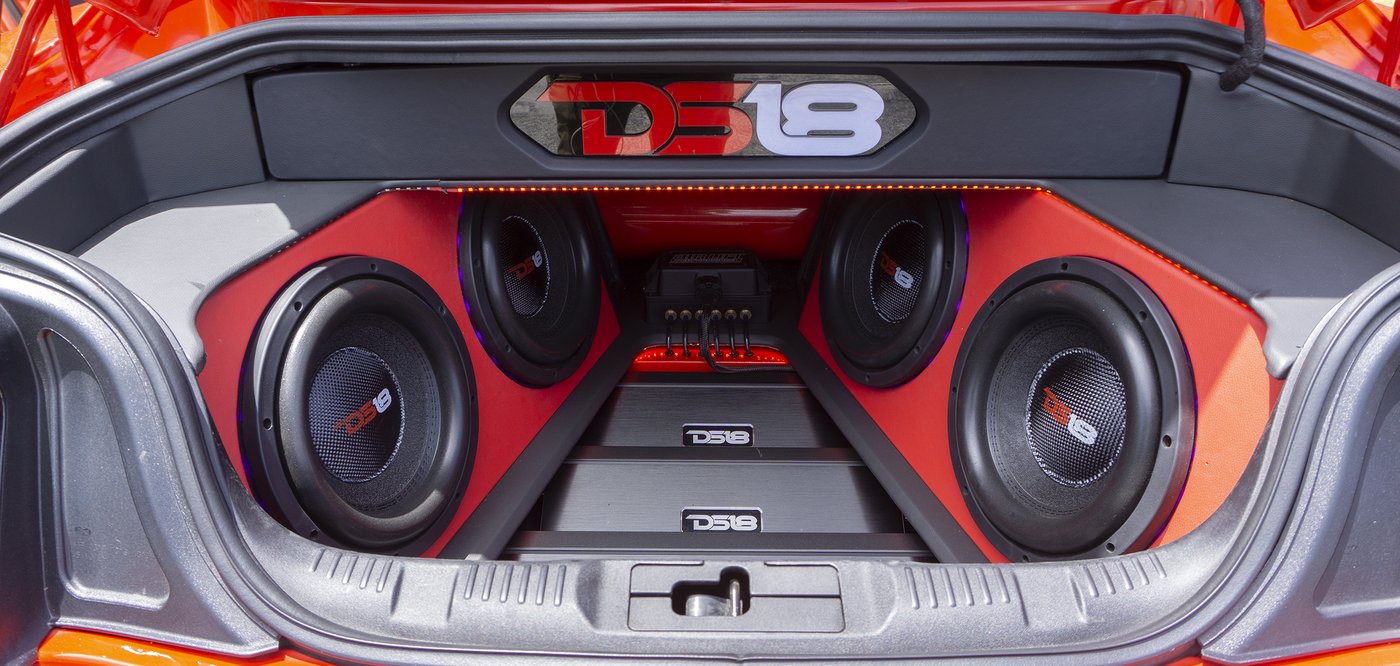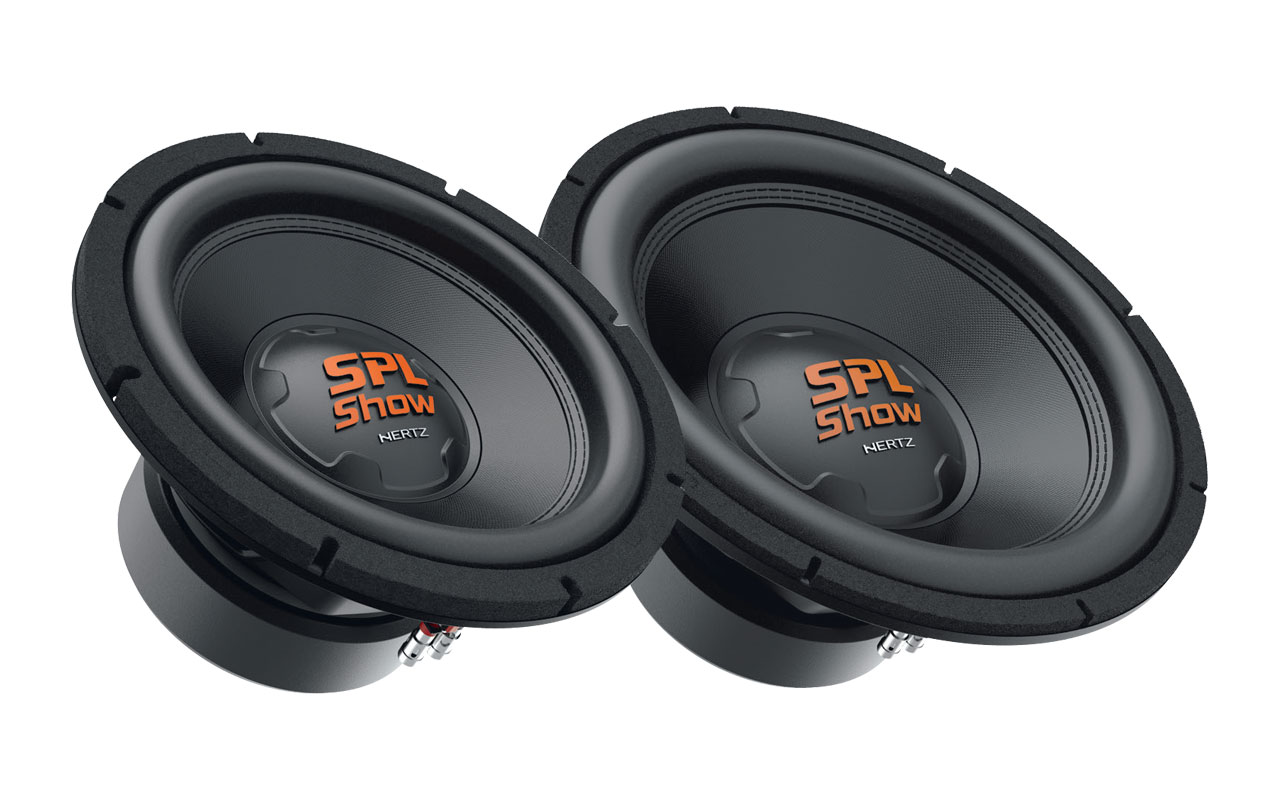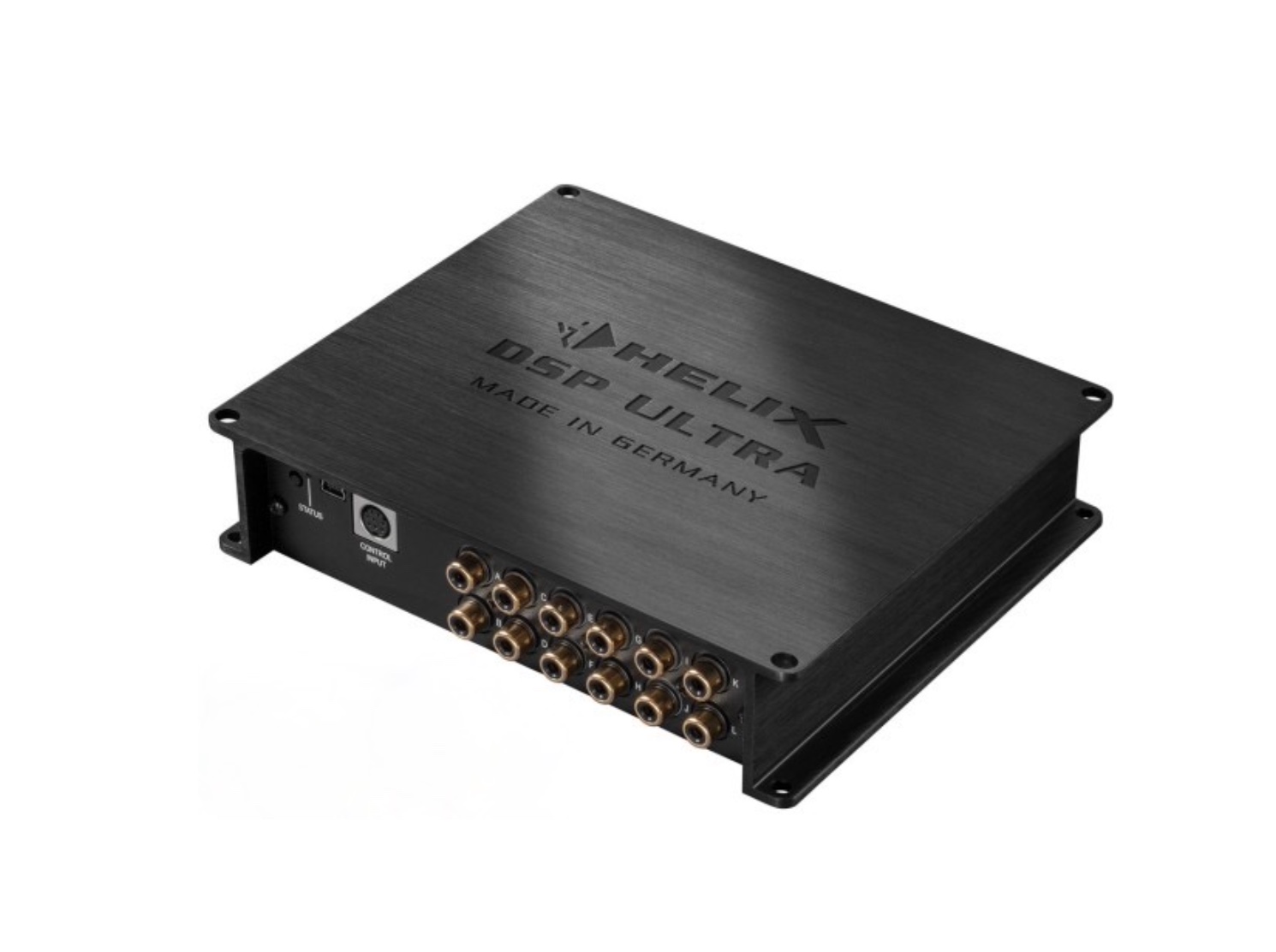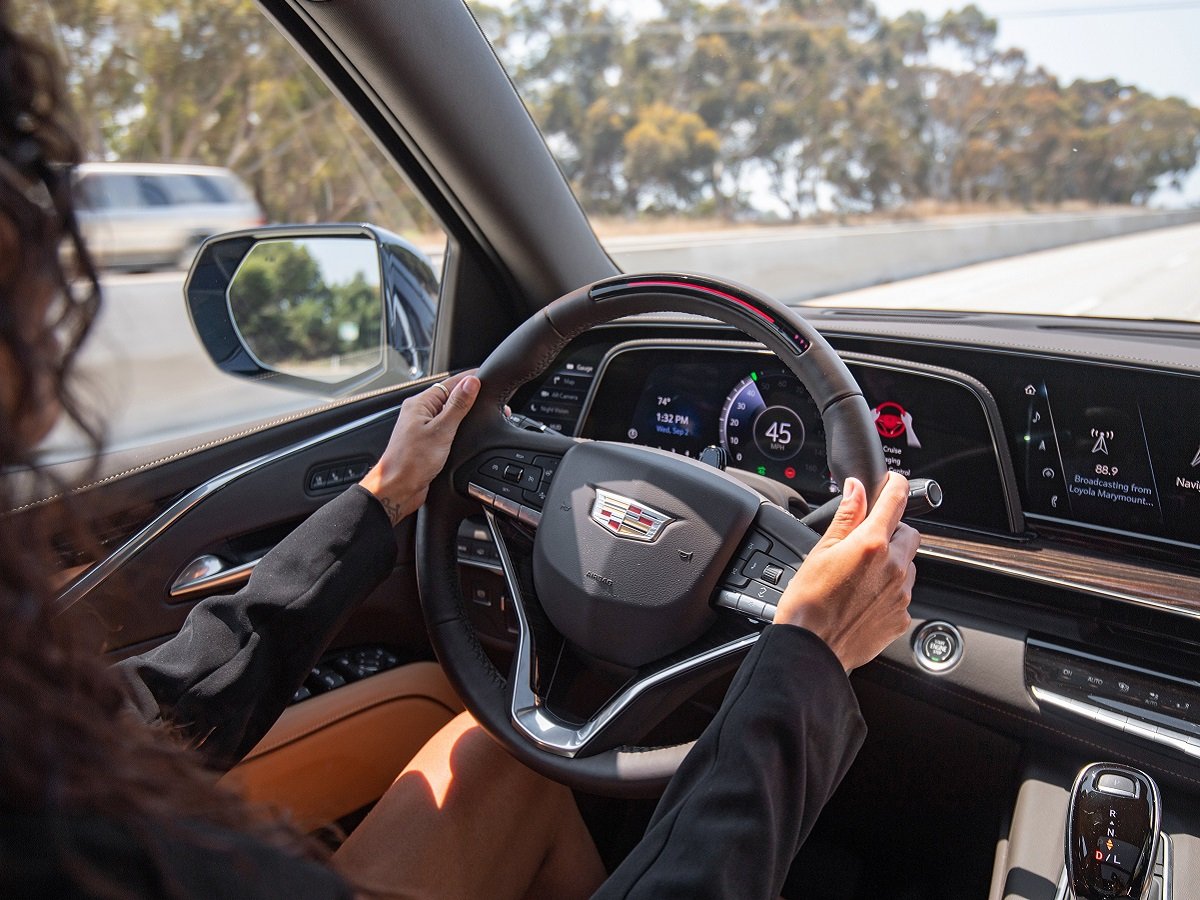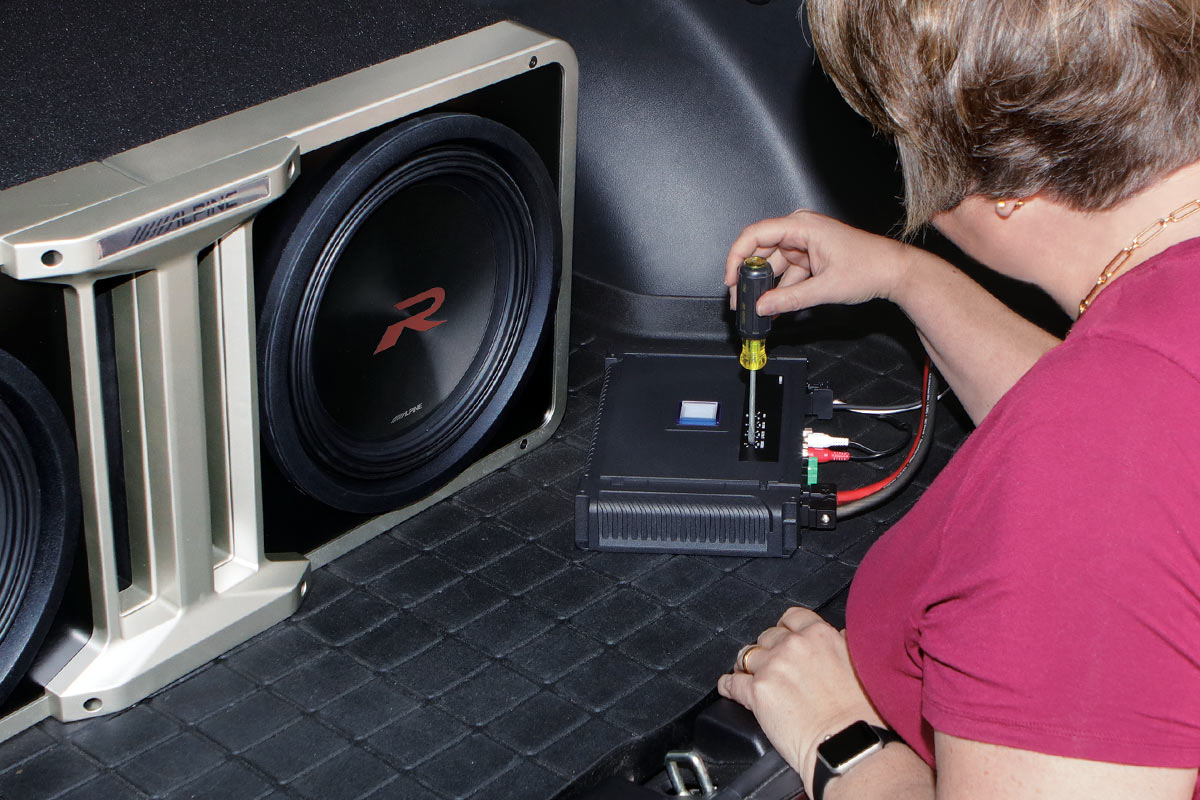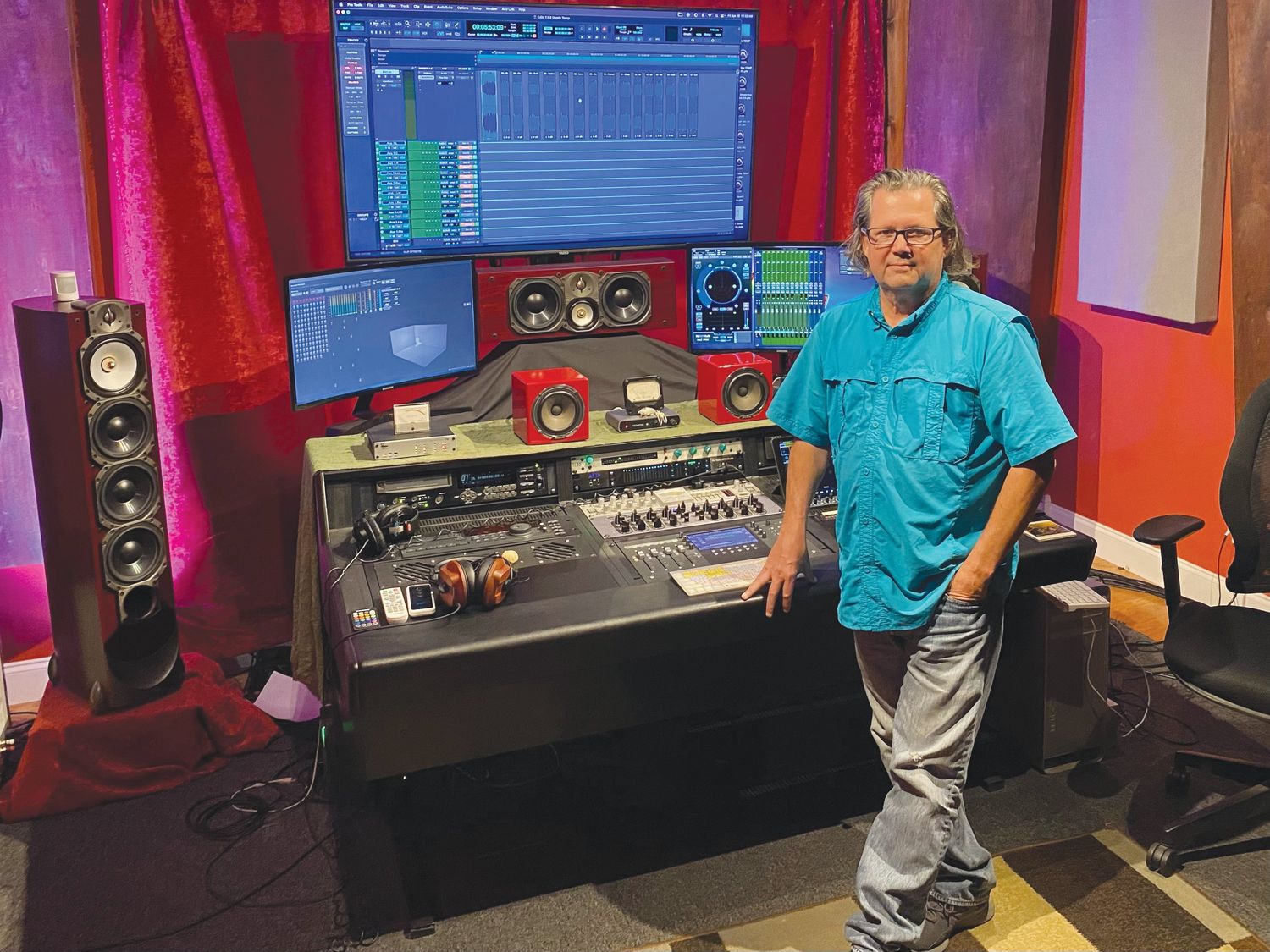Home>Devices & Equipment>Car Audio>How To Stop Engine Noise In Car Audio
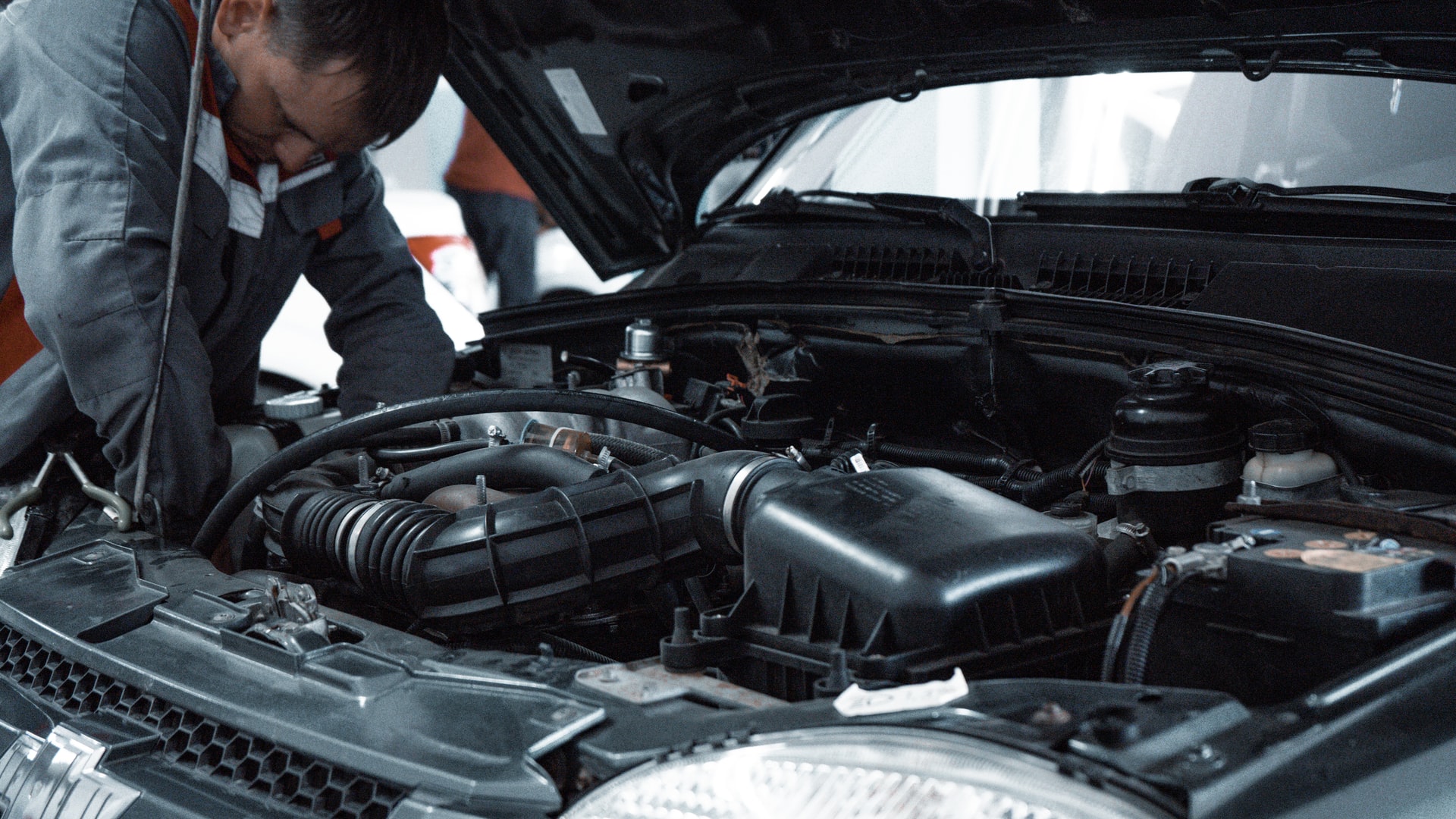

Car Audio
How To Stop Engine Noise In Car Audio
Published: February 6, 2024
Discover effective methods to eliminate engine noise in your car audio systems. Improve your overall listening experience and enjoy crystal-clear sound with our expert tips and techniques.
(Many of the links in this article redirect to a specific reviewed product. Your purchase of these products through affiliate links helps to generate commission for AudioLover.com, at no extra cost. Learn more)
Table of Contents
- Introduction:
- Understanding Engine Noise in Car Audio Systems:
- Causes of Engine Noise in Car Audio Systems:
- Tips for Reducing Engine Noise in Car Audio:
- Grounding the Audio System Properly:
- Using Shielded Audio Cables:
- Utilizing Noise Filters and Ground Loop Isolators:
- Addressing Alternator Whine:
- Installing Sound Deadening Materials:
- Conclusion:
Introduction:
Car audio systems are designed to provide an immersive audio experience during your journeys, allowing you to enjoy your favorite music while on the road. However, one common issue that can disrupt this experience is engine noise. Engine noise in car audio systems can be frustrating and distracting, affecting the overall sound quality and diminishing the enjoyment of your music.
Engine noise is typically caused by electrical interference from the vehicle’s engine components, such as the alternator, ignition system, or fuel injectors. These components generate electrical signals that can interfere with the audio signals coming from your car stereo. As a result, you may hear various types of noise, including hissing, buzzing, or whining, which can detract from the clarity and fidelity of the audio.
In this article, we will delve into the causes of engine noise in car audio systems and provide you with practical tips to help you reduce or eliminate this annoying issue. By implementing these strategies, you can enjoy a cleaner and more enjoyable audio experience on your daily commutes or long road trips.
Understanding Engine Noise in Car Audio Systems:
Before we delve into ways to reduce engine noise in car audio systems, it’s important to understand the various types of noise and how they manifest in your audio setup. By understanding the root causes of these issues, you can better tackle them and improve the sound quality.
1. Alternator Whine: Alternator whine is one of the most common forms of engine noise in car audio systems. It is characterized by a high-pitched whining or buzzing sound that changes with the engine RPM. This noise is caused by the alternator’s electrical system, particularly its diodes and voltage regulator.
2. Ground Loops: Ground loops occur when there are multiple ground connections in the audio system, causing a difference in electrical potential that leads to unwanted noise. This noise is often characterized by a low-frequency hum or buzz.
3. Ignition Noise: Ignition noise is interference caused by the electrical sparks in the ignition system. It can manifest as a series of clicking or popping sounds that are synchronized with the engine’s firing sequence.
4. Radio Frequency Interference (RFI): RFI is electromagnetic interference that can affect car audio systems. It often occurs when the audio cables are not properly shielded, allowing external radio frequencies to interfere with the audio signals.
Understanding the types of engine noise you may encounter will help you diagnose and troubleshoot the issue more effectively. It’s important to carefully listen to the noise to identify the specific characteristics and determine the most appropriate solution to resolve it.
Causes of Engine Noise in Car Audio Systems:
Engine noise in car audio systems can be caused by various factors, ranging from electrical interference to improper grounding. Here are some common causes:
1. Alternator: The alternator plays a crucial role in supplying power to the electrical components of your vehicle. However, it can also be a source of engine noise in your car audio system. The electrical signals produced by the alternator’s diodes and voltage regulator can interfere with the audio signals, resulting in alternator whine.
2. Grounding Issues: Proper grounding is essential in any audio system to prevent unwanted noise. If the ground connection of your car audio system is not properly established or is faulty, it can lead to ground loops, which manifest as a low-frequency hum or buzz.
3. Poorly Shielded Audio Cables: The audio cables that connect your car stereo to the speakers can pick up external electromagnetic interference if they are not adequately shielded. This interference, known as radio frequency interference (RFI), can result in noise being transmitted through the audio system.
4. Ignition System: The electrical sparks that occur in the ignition system can generate interference, which can be picked up by the audio system. This interference is commonly known as ignition noise and can manifest as clicking or popping sounds, synchronized with the engine’s firing sequence.
5. Inadequate Grounding of Aftermarket Accessories: If you have added aftermarket accessories, such as amplifiers or subwoofers, to your car audio system, improper grounding of these components can introduce noise into the system. It is essential to ensure that all additional components are properly grounded to minimize potential noise issues.
Identifying the specific cause of engine noise in your car audio system is crucial in finding the most effective solution. By understanding the underlying causes, you can take appropriate steps to minimize and eliminate the unwanted noise, thereby enhancing the overall audio experience in your vehicle.
Tips for Reducing Engine Noise in Car Audio:
To enjoy a clean and high-quality audio experience in your car, it’s essential to minimize engine noise. Here are some practical tips to help you reduce or eliminate engine noise in your car audio system:
- Grounding the Audio System Properly: Ensure that your car audio system is properly grounded. Use appropriate grounding techniques and follow the manufacturer’s instructions. Proper grounding helps eliminate ground loops, reducing unwanted noise.
- Using Shielded Audio Cables: Invest in high-quality shielded audio cables. These cables have insulation and shielding that help minimize interference from external sources, such as alternators or ignition systems. Quality cables can significantly improve audio signal integrity.
- Utilizing Noise Filters and Ground Loop Isolators: Noise filters and ground loop isolators are devices designed to reduce unwanted electrical interference. These devices help filter out noise and eliminate ground loops, ensuring a cleaner audio signal. Install them in your car audio system for improved sound quality.
- Addressing Alternator Whine: If alternator whine is an issue, consider installing an alternator noise suppressor or upgrading your alternator to a better quality one. These solutions can help minimize alternator noise and improve audio performance.
- Installing Sound Deadening Materials: Engine noise can also enter the cabin through vibrations and resonance. By installing sound deadening materials, such as acoustic foam or mass-loaded vinyl, on the doors, floor, and roof, you can reduce outside noise and enhance the audio experience inside the car.
Remember that these tips may require some technical knowledge and expertise. If you are unsure, it’s always best to consult a professional car audio installer who can provide guidance and ensure proper installation.
By implementing these tips, you can significantly reduce engine noise and improve the overall audio quality in your car audio system. Enjoy crystal-clear sound and an immersive audio experience on your drives!
Grounding the Audio System Properly:
Proper grounding is crucial in any car audio system to ensure optimal performance and minimize unwanted engine noise. Here are some steps to help you ground your car audio system properly:
- Locate a Suitable Ground Point: Find a suitable ground point near your audio system. It should be a metal surface that connects directly to the vehicle’s chassis. Avoid grounding to painted surfaces or plastic components.
- Create a Clean Ground Connection: Remove any paint, rust, or debris from the chosen ground point to ensure a clean connection. Use sandpaper or a wire brush to expose bare metal for better conductivity.
- Connect the Ground Wire: Use a high-quality ground wire with appropriate gauge thickness. Connect one end of the wire to the ground point, and the other end should be securely attached to the ground terminal of your car audio system.
- Avoid Ground Loops: Ground loops can introduce noise into the audio system. To avoid ground loops, make sure all components within the audio system share the same ground point. Avoid connecting components to multiple grounding sources.
- Check for Proper Grounding: After connecting the ground wire, ensure that it is securely attached and tightly fastened. Check for continuity using a multimeter to verify a solid ground connection.
Additionally, ensure that all other connections, such as power and signal cables, are kept separate from the ground wire to prevent interference. Properly grounding the audio system will help minimize noise caused by ground loops and provide a solid foundation for optimal audio performance.
If you are uncertain about grounding your car audio system, it’s advisable to seek assistance from a professional installer or technician. They have the expertise to ensure proper grounding and minimize the risk of electrical issues or damage to your vehicle.
By following these grounding steps, you can significantly reduce engine noise and create a clean and crisp audio environment in your car.
Using Shielded Audio Cables:
The use of high-quality shielded audio cables is essential to minimize engine noise and interference in your car audio system. Shielded cables are designed to prevent external electromagnetic interference from impacting the audio signals. Here are some tips for using shielded audio cables effectively:
- Choose the Right Type of Cable: Select shielded audio cables specifically designed for car audio applications. These cables are typically labeled as “shielded” or “noise-canceling.” Look for cables with a thick outer insulation and multiple layers of shielding for maximum protection against interference.
- Proper Cable Routing: Ensure that the shielded audio cables are routed away from power cables, ignition wires, or other potential sources of electromagnetic interference. Maintaining a distance between the audio cables and other electrical wires helps minimize the risk of interference.
- Secure and Isolate the Cables: Use cable ties or clamps to secure the shielded audio cables along their path. This ensures that the cables do not come into contact with nearby components or surfaces that could induce noise or vibrations. Additionally, avoid routing the cables near hot or moving parts of the vehicle.
- Avoid Sharp Bends and Twists: Avoid tight bends or twists in the shielded audio cables as these can lead to signal degradation or interference. Maintain smooth curves and gentle bends to preserve the integrity of the audio signals.
- Inspect and Replace Damaged Cables: Regularly inspect your shielded audio cables for any signs of damage or wear. If you notice any frayed wires, broken connectors, or other issues, replace the damaged cables as they can introduce additional noise into the audio system.
Using shielded audio cables is a simple yet effective way to reduce engine noise and improve the overall sound quality of your car audio system. By investing in high-quality cables and following proper installation practices, you can enjoy cleaner and more accurate audio reproduction during your drives.
Remember to take necessary precautions and consult with a professional installer if you are unsure about installing or routing the cables properly. They can provide expert advice and ensure the optimal setup of your car audio system.
Utilizing Noise Filters and Ground Loop Isolators:
Noise filters and ground loop isolators are effective tools that can help minimize engine noise in your car audio system. These devices work by filtering out unwanted electrical interference and eliminating ground loops, resulting in cleaner and clearer audio. Here’s how you can utilize noise filters and ground loop isolators:
- Noise Filters: Noise filters are designed to remove electrical noise from the audio signal. They typically connect between the audio source (such as the head unit) and the amplifier or speakers. Noise filters work by detecting and suppressing the unwanted noise, allowing the clean audio signal to pass through.
- Ground Loop Isolators: Ground loops can cause significant noise issues in car audio systems. Ground loop isolators are devices specifically designed to address this problem. They are installed between the audio input source and the amplifiers or speakers, effectively breaking the ground loop and eliminating the associated noise.
- Choose High-Quality Devices: When selecting noise filters and ground loop isolators, opt for reputable brands and high-quality products. This ensures that they effectively filter out noise without introducing other artifacts or degrading the audio signal quality.
- Proper Installation: Follow the manufacturer’s instructions for installation to ensure proper functioning of the filters and isolators. Connect the devices correctly in the audio signal path, ensuring secure and tight connections. Improper installation may result in suboptimal noise reduction or even worsen the noise issue.
- Troubleshooting: If you continue to experience engine noise after installing filters and isolators, consider repositioning or replacing the devices. Sometimes, interference sources can be located closer to certain audio components, requiring adjustments in the placement of the noise filters or isolators for optimal noise reduction.
Noise filters and ground loop isolators are invaluable tools for reducing unwanted engine noise in car audio systems. They provide a convenient and effective way to tackle noise issues and improve the overall audio quality in your vehicle.
It’s important to note that while noise filters and ground loop isolators can address certain noise problems, they may not resolve all types of engine noise. If you are unable to mitigate the noise using these devices, consulting with a professional car audio installer or technician is recommended for further troubleshooting and solutions.
Addressing Alternator Whine:
Alternator whine is a common issue in car audio systems that can be incredibly frustrating. It is typically characterized by a high-pitched whining or buzzing sound that changes with the engine RPM. Here are some tips to help you address alternator whine:
- Check Grounding and Wiring: Ensure that all grounds are properly connected and secure. Loose or faulty grounding connections can contribute to alternator whine. Additionally, inspect the wiring for any signs of damage or interference and replace as necessary.
- Upgrade the Ground Wire: Consider upgrading the ground wire from the alternator to the battery. Use a thicker gauge wire with proper insulation to improve grounding and minimize electrical interference.
- Install an Alternator Noise Suppressor: An alternator noise suppressor, also known as a noise filter or capacitor, can help reduce or eliminate alternator whine. These devices are connected between the alternator output terminal and the battery, effectively filtering out the noise before it reaches the audio system.
- Upgrade the Alternator: If alternator noise persists even after trying the above solutions, it might be worthwhile to consider upgrading to a higher-quality alternator. A better quality alternator can provide cleaner power and reduce electrical noise overall.
- Isolate Audio Components: It’s possible that the alternator whine is being induced by a specific audio component. To identify the culprit, try isolating each component one by one by disconnecting them from the audio system and monitoring for changes in the whine. This can help pinpoint the source and allow for targeted troubleshooting.
It’s important to note that addressing alternator whine may require some technical knowledge and expertise. If you are unsure or uncomfortable with the troubleshooting process, it’s advisable to seek assistance from a professional car audio installer or technician. They have the knowledge and equipment to diagnose and resolve alternator whine effectively.
By implementing these tips and solutions, you can significantly reduce or eliminate alternator whine, ensuring a cleaner and more enjoyable audio experience in your car.
Installing Sound Deadening Materials:
One effective way to minimize engine noise and enhance the audio experience in your car is by installing sound deadening materials. These materials help reduce vibrations, resonance, and outside noise from entering the cabin, resulting in improved sound quality. Here’s how you can install sound deadening materials:
- Identify Problem Areas: Determine the areas in your car where engine noise is most prominent. Common problem areas include doors, floorboards, roof, and trunk.
- Clean and Prepare the Surfaces: Ensure that the surfaces where the sound deadening material will be applied are clean and free from dirt, grease, and debris. Use a suitable cleaner and allow the surfaces to dry completely.
- Choose the Right Material: Select high-quality sound deadening materials designed specifically for automotive applications. Some commonly used options include mass-loaded vinyl, butyl-based sheets, or foam insulation.
- Measure and Cut the Material: Measure the dimensions of the areas to be covered and cut the sound deadening material accordingly. Use a sharp utility knife or scissors to achieve clean and accurate cuts.
- Apply the Material: Peel off the backing of the sound deadening material and carefully apply it to the desired surfaces. Press firmly to ensure proper adhesion and minimize air pockets or gaps.
- Repeat for other Areas: Repeat the process for other areas identified as problem spots. This may include applying the material to the inner door panels, floorboards, roof, or trunk area.
- Consider Additional Insulation: For maximum effectiveness, you can also add additional insulation such as foam or carpet padding over the sound deadening material. This further reduces vibrations and improves noise isolation.
Installing sound deadening materials can significantly reduce engine noise and create a quieter and more enjoyable environment in your car. It also enhances the audio quality by minimizing resonance and improving the overall acoustics.
If you are unsure about the installation process or need assistance, consider consulting a professional car audio installer. They have the expertise and experience to recommend and install the appropriate sound deadening materials for your specific vehicle.
By following these steps and using high-quality sound deadening materials, you can greatly enhance the audio experience in your car, creating a quieter and more immersive environment for your music and enjoyment.
Conclusion:
Engine noise in car audio systems can be a frustrating issue that hampers the overall audio quality and listening experience. However, by understanding the causes of engine noise and implementing the right strategies, you can significantly reduce or eliminate this unwanted noise.
In this article, we explored various ways to address engine noise in car audio systems. Proper grounding of the audio system, using shielded audio cables, utilizing noise filters and ground loop isolators, addressing alternator whine, and installing sound deadening materials are all effective methods to minimize engine noise and enhance audio quality.
It is vital to remember that addressing engine noise may require some technical knowledge and expertise. If you are uncertain or uncomfortable with the troubleshooting and installation process, seek assistance from a professional car audio installer or technician. They can guide you through the process and ensure optimal results.
By implementing the tips and techniques outlined in this article, you can create a cleaner and more enjoyable audio experience in your car. Say goodbye to engine noise and embrace a high-quality sound system that elevates your driving journeys.
Investing time and effort into reducing engine noise will ultimately reward you with a more immersive, crystal-clear audio experience in your car. Sit back, relax, and enjoy your favorite music without the interference of unwanted noise!

